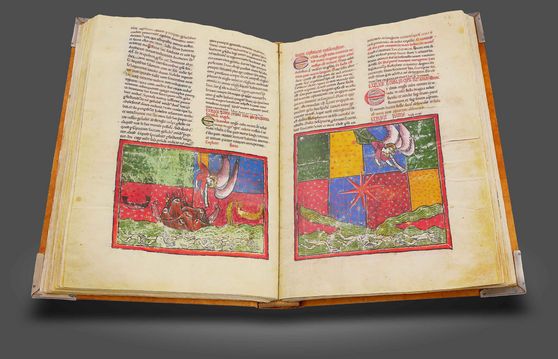Facsimile Editions: Beatus of Liébana
In the 8th century, the learned Spanish monk Beatus of Liébana wrote a commentary on the biblical Book of Revelation that was to become widely read and well-known, especially in the Early and High Middle Ages. The Beatus manuscripts quickly developed into a genre of their own, which was of particular importance in northern Spain. Even today, the wondrous and symbolic imagery of the 27 surviving codices, the majority of which are available as facsimile editions, is fascinating.
Copied and beautifully illuminated almost 1,100 years ago: one of the oldest Beatus manuscripts still preserved today with 27 colorful as well as peculiar miniatures
Monastery of Valeránica (Spain) — Ca. 930
Experience more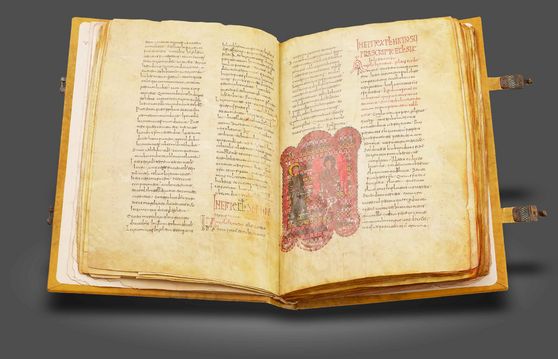
The unique treasure of the famous Morgan Library in New York: the oldest and only 2-volume Beatus manuscript, magnificently illuminated and style-forming for the entire genre
San Salvador de Tábara (Spain) — Ca. 940–945
Experience more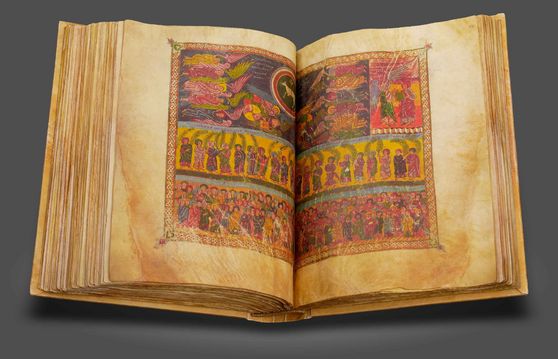
Created at the end of the 1st millennium and preserved today in the famous library of El Escorial: perhaps the most valuable of all surviving Beatus manuscripts
Most probably the scriptorium at San Millán de la Cogolla, Rioja (Spain) — ca. 950
Experience more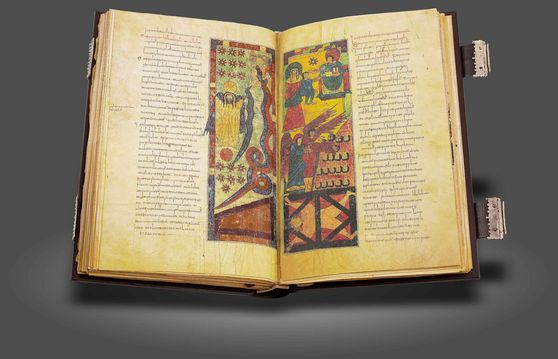
Completed exactly on July 27, 970: a unique Beatus manuscript and milestone in art history with the miniature of the famous tower scriptorium of the Tábara monastery
San Salvador Monastery in Tábara (Spain) — 10th century
Experience more
Fascinating Mozarabic book art preserved in the monastery of Valcavado until the 16th century: one of the best preserved Beatus manuscripts and "one of the most impressive Spanish works of art" of the High Middle Ages
Monastery of Santa Maria in Valcavado (Spain) — June 8 to September 8, 970
Experience more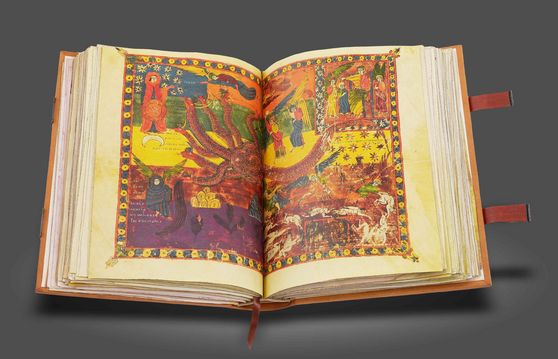
Already very special because the names of the patrons, illuminators, and scribes are known: one of the most beautiful and probably best documented Beatus manuscripts in the world
Scriptorium of the Monastery of San Salvador de Tábara (Spain) — 975
Experience more
Stolen in 1996 and returned a year later: an early, magnificently illustrated jewel among the intriguing Beatus manuscripts with 90 outstanding miniatures by an anonymous Romanesque master
San Millán de Suso, Léon or La Rioja (Spain) — Last quarter of the 10th century
Experience more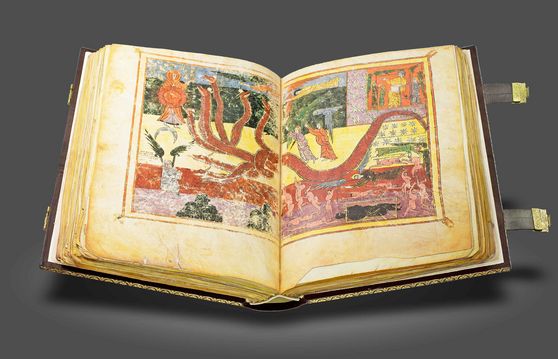
More than a century lay between its beginning and its completion: a unique Beatus manuscript in the Mozarabic and Romanesque styles with excerpts of the lexicon of Isidore de Sevilla (ca. 560-636)
Probably Castile (Mozarabic Part) and San Millán de la Cogolla (Romanesque part) (Spain) — First part: Late 10th or early 11th century (Mozarabic); Second part: second half of the 11th century (Romanesque)
Experience more
A highlight of the 11th century with influences of Insular, African, Islamic, and Oriental art: the only Beatus manuscript produced in France and endowed with no less than 112 impressive miniatures
Saint-Sever Monastery, Saint-Sever (France) — Ca. 1038
Experience more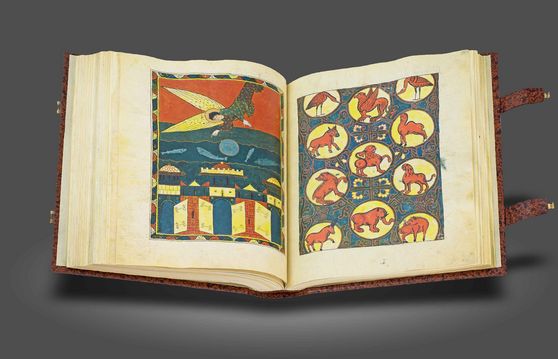
The only Beatus manuscript that was not created in a monastery but at the royal court: the impressive work of the scribe Facundus for King Ferdinand I and his wife
León (Spain) — Ca. 1047
Experience more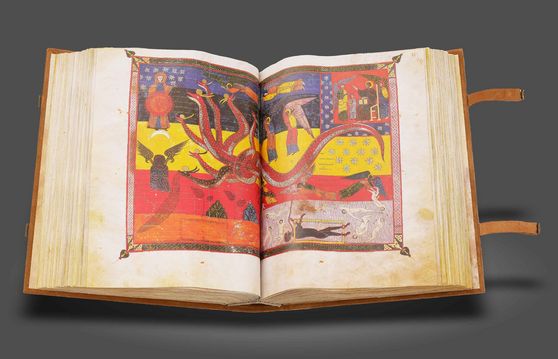
Majestic angels and fearsome monsters of the Apocalypse: a Beatus manuscript with a turbulent ownership history and unique painting
Navarra (Spain) — 11th century
Experience more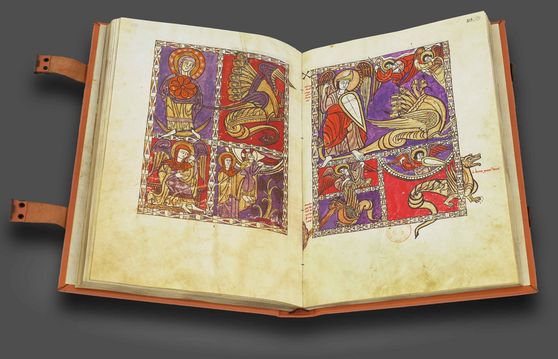
The stylistic transition from Mozarabic to Romanesque: the Beatus manuscript with the famous double-page mappa mundi populated by mythical creatures
Spain — 1086
Experience more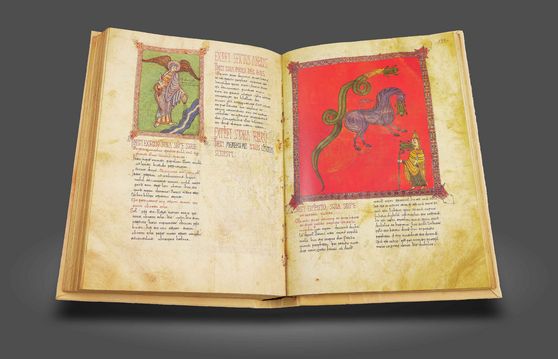
A rarity from Italy rediscovered in Geneva only in 2007: the Beatus manuscript from the famous Abbey of Montecassino, splendidly illuminated with 65 haunting miniatures
Probably Montecassino Abbey (Italy) — Late 11th and early 12th century
Experience more
Sold by Napoleon's brother to the British Library in 1820: a fascinating Beatus manuscript with over 100 gilded miniatures that took 20 years to complete
Scriptorium of the Monastery of Santo Domingo de Silos (Spain) — April 18th, 1091 – June 30th, 1109
Experience more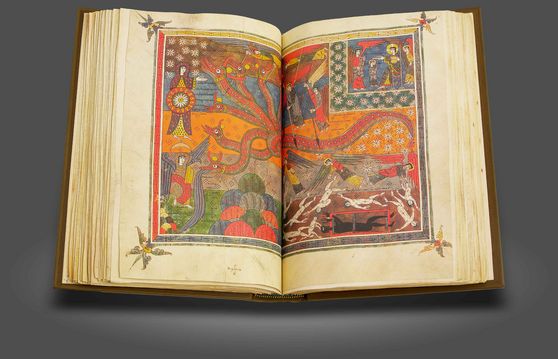
A true rarity as an Italian Beatus manuscript: unique pen and ink drawings with John, the author of the Apocalypse, hidden in each miniature
Italy — Early 12th century
Experience more
With 123 full-page miniatures in the Romanesque-Byzantine style: a Beatus manuscript with epic scenes such as the Great Flood embellished with gold and silver
Probably Castile (Spain) — 12th century
Experience more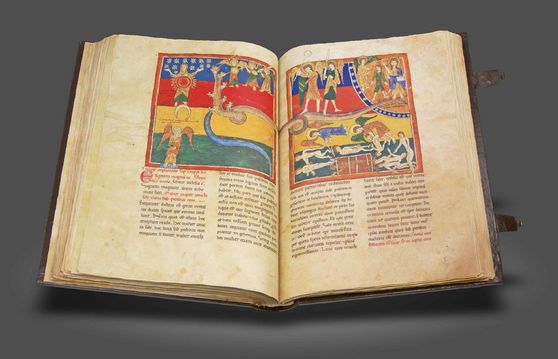
A woman in the team of illuminators: a Beatus manuscript based on the 10th century Girona Codex and yet with unique miniatures
Gerona Cathedral (Gerona, Spain) — 12th century
Experience more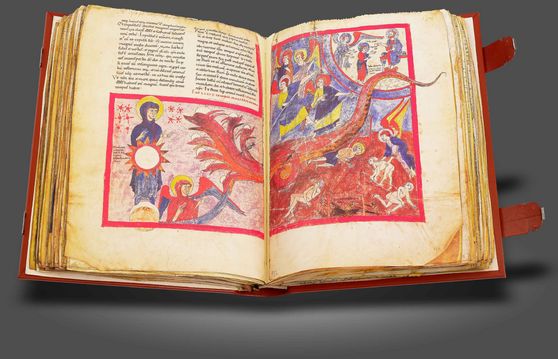
Miniatures of haunting beauty: in some respects perhaps the most interesting of the 27 Beatus manuscripts that have survived to the present day
Monastery of Sahagún (Léon, Spain) — 1151–1200
Experience more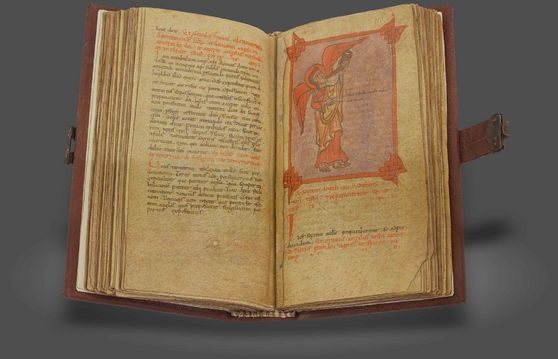
The pictorial bridge between Romanesque and Gothic: a fascinating Beatus manuscript with 51 gold-ornamented miniatures by two genuine masters of their respective styles and today scattered in four parts across two continents
Scriptorium of the Monastery of San Pedro de Cardeña (Burgos, Spain) — Between 1175 and 1185
Experience more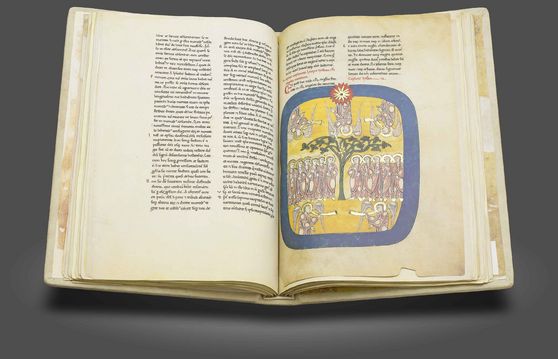
Apocalyptic images in the oldest surviving example of Portuguese book illumination: a unique early Beatus manuscript with 88 large and remarkably colored miniatures
Saint Mamede Monastery of Lorvao (Portugal) — 1189
Experience more
An unprecedented picture program for King Ferdinand III of Castile: one of the last and at the same time most beautiful Beatus manuscripts with 69 gold and silver adorned miniatures from the monastery of San Pedro de Carden͂a
Scriptorium of the Monastery of San Pedro de Cardeña (Burgos, Spanien) — Ca. 1220
Experience more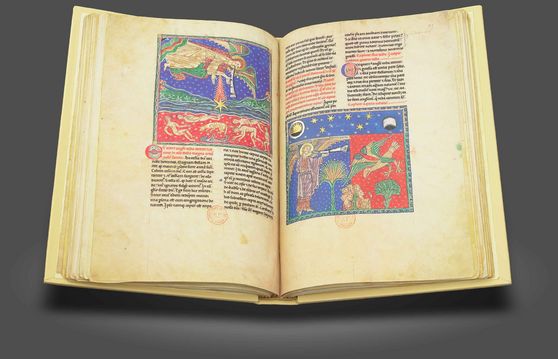
The last and at the same time largest manuscript of the famous Spanish Beatus tradition: over 100 Gothic miniatures, some of them double-pages, created for the daughter of King Alfonso III of Castile
Las Huelgas Monastery, Burgos (Spain) — 1220
Experience more